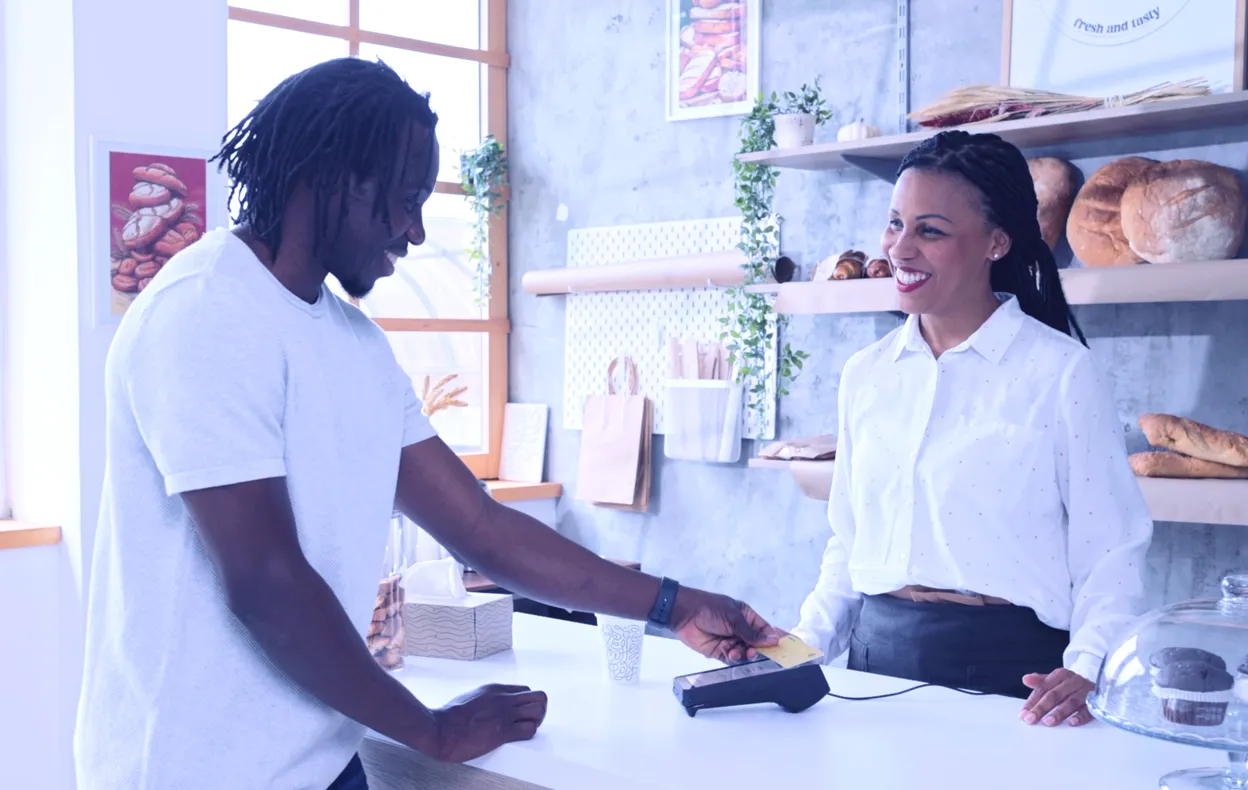According to a recent poll from Mastercard, more than half of Americans choose a contactless payment method over other options at the checkout. In fact, at least once in July 2024, 65% of U.S. adults processed a transaction using a digital wallet. That statistic alone should justify prioritizing contactless payment acceptance in brick-and-mortar locations. However, there’s even more evidence that merchants should prioritize implementing technology and training their employees to optimize contactless payment experiences.
First, the trend is toward digital forms of payment overall. According to 2023 Findings from the Diary of Consumer Payment Choice, cash use has decreased from 31% of payments in 2016 to 18% of payments in 2022. While the decline in cash use isn’t directly driving contactless payment adoption, consumers tend to gravitate toward the easiest, most convenient way to make purchases. So, merchants can expect the convenience and speed of simply tapping or waving a card or a smartphone near a card reader with near-field communication (NFC) technology to result in continued adoption.
Contactless payments are also more secure than other types of payments. Card numbers are never visible to store employees and cards never change hands. Contactless payments also use the same rails as EMV payments, which secures transactions and mitigates fraud.
Another factor driving the need to accept contactless payments is the growing percentage of digital-first consumers. Generation Z, now representing 68 million consumers, has doubled its spending power since 2019. According to a Gen Z Payment Survey by EY, this generation is three times more likely than others to use an alternative method such as contactless payments. Furthermore, Gen Z consumers have different attitudes toward payment experiences than older consumers. For example, 39% find entering a PIN an inconvenience compared to 29% of consumers. Couple that with Gen Z being twice as likely to abandon a purchase if their preferred payment method isn’t available, and contactless payments becomes a must-have for merchants.
Finally, adoption is increasing because more consumers have contactless cards and mobile wallets and more merchants have devices that accept them. In a 2022 survey, 92% of small businesses with physical locations could accept contactless payments and 81% of merchants planning to make contactless payments a permanent part of their checkout processes.
What’s in Store for the Future of Contactless Payment Adoption?
While many merchants can accept contactless payments at the counter via traditional payment technology, consumers will expect to be able to pay with contactless cards and mobile wallets wherever they make payments, e.g. in the aisles of a retail store, at unattended devices, at the table in a restaurant, at a food truck counter or farm stand, or at a pop-up store. As a result, merchants are using mobile devices capable of accepting contactless payments.
An emerging trend is for merchants to adopt SoftPOS technology for contactless payment transactions. Merchants can download the SoftPOS application, contact their payment provider, and start processing transactions within minutes without investing in new hardware. SoftPOS reduces the barrier to entry for micro-merchants and small businesses. However, it gives large and enterprise merchants a cost-effective way to complement existing payment technology with a mobile option with a lower total cost of ownership. In addition to allowing merchants to use mobile devices they already own, SoftPOS eliminates the cost of maintaining additional payment devices and addressing evolving PCI compliance requirements. It can also keep operations running in the event of a network interruption and give enterprises a cost-effective alternative to keeping a spares pool for countertop terminals that need repair.
Keep Up with Contactless Payment Trends
As more consumers build contactless payments into their routines, merchants must be prepared to offer the payment experiences they expect. Furthermore, a growing number of consumers will become comfortable with only taking a smartphone when shopping or dining. To capture sales from these consumers, merchants must accept contactless payments.
Ingenico offers a comprehensive portfolio of payment solutions, including SoftPOS, to enable merchants to meet customers' expectations today and position them for the future of payments. Contact us to learn more.











